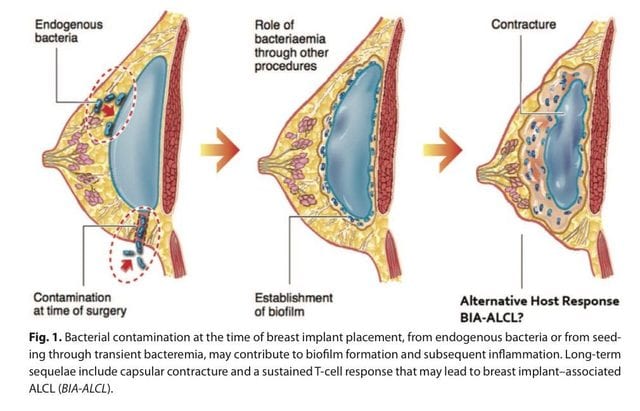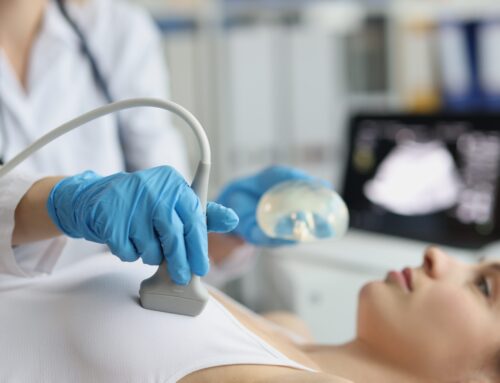Have you previously had breast augmentation surgery? Are you experiencing firm, misshaped, round ball-like, and painful breasts? Well, it could be a sign of capsular contracture, and you may need treatment for it.
We all know breast augmentation is one of the most common cosmetic surgery performed worldwide. Although complication rates of augmentation surgery are low, statistical data reveals 8.2% of patients had experienced capsular contracture of grade III/IV within the past six years. Capsular contracture is a primary reasons why some women opt-in for explant surgery.
What is Capsular Contracture?
The formation of scar tissue and capsule around the implant is a normal response of the body and is considered safe and helpful in keeping the implants intact. Capsular contracture is a complication that develops when this internal scar tissue forms a thick, hard, and constricting capsule around the implants. This contracting capsule can result in stiff and painful implants distorting the appearance and shape of your breasts. Data suggests the rate of contracture is higher with silicone gel implants than saline implants.
How do I know if I have had a capsular contracture?

Initially, you may experience slight firmness and contraction around your implants, working its way out. This increase in tightness causes painful breasts, especially when you sleep while lying on them, indicating a capsular contracture. Other symptoms may include misshaped, round, uptight, and raised breast with visible rippling.
Most board-certified plastic surgeons recommend an annual check-up of up to 5-10 minutes to ensure you stay well and live a healthy life with your implants.
How severe is my capsular contracture?
Do you believe you have a capsular contracture and unsure of when to seek the treatment? It depends on the severity of your capsule contracture.
The following grading system is used to measure the gravity of capsular contracture:
• Grade I: Soft and natural-looking breasts (asymptomatic).
• Grade II: Firm but natural-looking breasts.
• Grade III: Firm and misshaped breasts (often appears with less or no pain).
• Grade IV: Hard, tender, and painful breasts with prominent misshapen appearance.
If you are experiencing any such symptoms, your breast implants need to be checked for ruptures.
What are the available treatment options?
There are few temporary non-operative options; however, capsular contracture surgery is the only guaranteed treatment for the complete removal of the capsule. The potential of recurrence remains possible even after the explant surgery.
The non-surgical treatment option available is Aspen multi-energy therapy. The procedure is completely non-invasive and involves using ultrasound waves to aid the softening of scar tissue in combination with vitamin E, antibiotics, and other anti-inflammatory medication to treat the capsular contracture.
Aspen therapy treats and actively reverses capsular contracture of grade II and III. Grade IV can require surgical intervention.
Capsular contracture surgeries include:
• Capsulectomy
In a capsulectomy, our board-certified plastic surgeon Dr. Barrett removes the implant and the scar tissue around it to reduce the thickening of the capsule, followed by the placement of new implants. If the capsule is highly painful, the recommendation may include two surgeries at the interval of 6-9 months between the capsulectomy and the implant surgery.
• Open capsulotomy
During capsular contracture surgery, incisions are used to cut open the implant and remove the capsule’s thickening. It provides extra space for the implant movement.
• Autologous reconstruction
Autologous reconstruction surgery involves reconstructing the breast by replacing the implant with a flap of tissue obtained from another body part. The results are better as the capsule is unlikely to form around the implant in the future.
How do I avoid capsular contracture?
It is impossible to prevent capsular contracture, and not every breast implant turns out this way. A few advised tips can help you overall.
• A recent study breakthrough revealed promising results using Omega 3 Fatty acids to prevent capsular contracture. The group receiving Omega 3 fatty acids demonstrated a thinner capsule around the implant compared to the placebo.
• A daily compression massage of your implants starts one month after your surgery and once a day, for 5 minutes for your implants’ lifespan. This technique improves healing and prevents the hardening of the capsule. However, it cannot eliminate the risk of capsular contracture.
• Proper wound care management and sterilized band-aid use to avoid bacterial infection.
• Please always adhere to Dr. Barrett’s recommendations before and after the surgery to avoid any complications.
If you have capsular contracture and don’t know what to do, consult with Barrett Plastic Surgery to learn about the most suitable treatment options available for you.







Leave A Comment